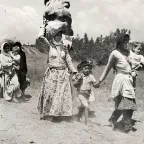Colombia: “When the water tanks arrived, the whole village celebrated”
Seven out of ten people in the village of Tamaje, on the Pacific Coast of Colombia, were falling ill from drinking contaminated water. The ICRC resolved the problem by installing rainwater storage …






